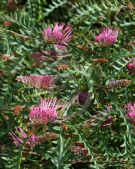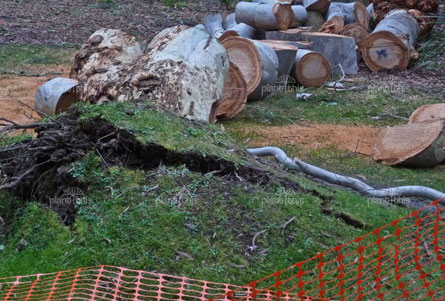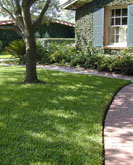pruning
Please login or become a member to start adding favourite plants & articles to your profile.
after the storm
QUICK TIPS:
1. Replace trees with poor prospects
2. Avoid tree dependence on staking
3. Prune broken branches carefully
4. Remove torn bark without further tearing
5. Leave foliage that's damaged but alive
6. Fertilise lightly
Gardeners learn to work with nature and accept the transience of their creations. But in the face of a sudden and thorough smack down like a hailstorm or flood, it's easy to give up in despair at the devastation wreaked upon all that labour and love.
Once large, dangerous trees have been secured, the garden isn't among the highest of priorities for a while, naturally. A short separation between garden and gardener is probably a good thing for both.
When the time and resolve to tackle the garden do inevitably return, it's important to fall back on best practices to ease plants through a vulnerable recovery period and to keep in mind the limitations of what can be retrieved.
Many conifers stood through storms in Sydney back in 1991 but eventually succumbed to the impact damage of big hailstones and died. Be prepared for further losses.
Staking trees is never ideal. If re-establishing the long-term stability of an undermined tree is questionable, start again rather than leave a time bomb to grow bigger in the backyard. Where there's a realistic future but extra temporary support is needed, train a young tree to re-assert its own stability with at least three evenly spaced stakes and loose material ties.
Reduce the chance of infections by cleanly pruning broken tree branches back to the previous branch junction. The cut shouldn't be flush against the retained branch but cut from the top of the junction and perpendicular through the branch being removed - leaving the shortest stub.
Torn bark that wont hold back in place on unbroken limbs can be carefully cut without causing any further tearing. Just leave the wounds - fussing is likely to create more problems than benefits. Ensure all tools are clean.
Don't rush a tidy up. Give injured plants time to reveal what parts will survive and what can be cut. Diving in with the pruners and removing more live foliage than already lost - even if damaged and unsightly - only further sets back the plant's ability to photosynthesise its own food.
Hail-damaged succulents with large, slow-growing leaves or stems will bear ugly scars for a long time. Lightly fertilise and encourage fresh regrowth from most plants. And look forward to another spring.
Comments (0)
Tell our Plant Selector what you want & like and we'll search thousands of plant profiles for compatible matches
Special Offers

Plant of the Day
Boongala Spinebill Grevillea
Plant type: evergreen shrub
H: 1.5m W: 3m
Sunlight: hot overhead sun to warm low sun

Fast Facts
edibles
A bumper harvest – whether on a large or small scale – is not a low maintenance project and depends on rich, well-drained soil and plenty of sun and water.
Recently added pruning articles
Most viewed pruning articles
Get the Plant Selector's full features plus news, forums & competitions. Sign up, it's free.
Click here for more





You must be a member to share: Login or Register